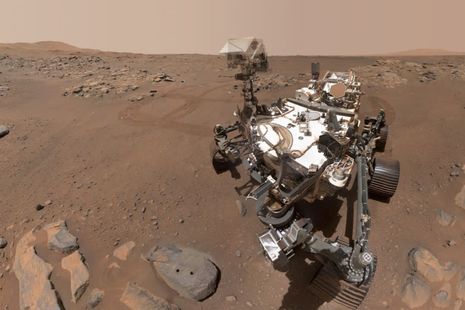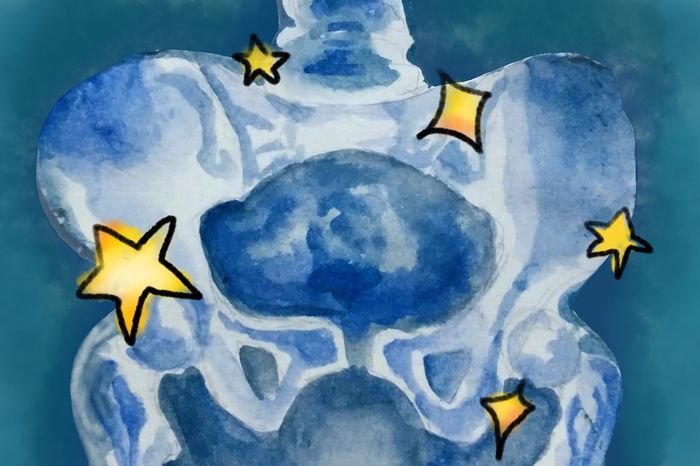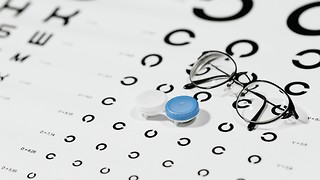Research Roundup: Week One
Pooja Gada catches you up on some of the summer’s scientific research

Mars, microbes and minerals: the clearest sign of life yet?
Fourteen months ago, NASA’s Perseverance rover wheeled itself along the rim of Mars’ Neretva Vallis, an ancient river valley carved by water flowing into the Jezero Crater over three billion years ago, and started drilling. It was on a mission. What it found – a ‘potential biosignature’ – prompted NASA administrator Sean Duffy to recently announce that this “could be the clearest sign of life that we’ve ever found on Mars.”
Formed 3.2-3.8 billion years ago, the rock sample – nicknamed Sapphire Canyon – has distinctive ‘leopard spot’ rings and dark ‘poppy seed’ flecks. Perseverance’s onboard instruments revealed that these markings are composed of iron-rich mineral deposits, including vivianite and greigite. On Earth, such minerals often form as by-products of microbes – tiny, living organisms – undergoing metabolic reactions. This makes the presence of these minerals on Mars especially intriguing. If the same metabolic reactions happened on Mars, this could be evidence of Martian life.
There is a caveat: it is also possible these minerals could have been created abiotically (in the absence of any life). However, hope is not lost. The rocky outcrop where Sapphire Canyon originated shows little evidence of the abiotic conditions necessary to create these minerals: sustained high temperatures, acidic conditions, or binding by organic compounds, making a biological explanation more plausible.
“If the same metabolic reactions happened on Mars, this could be evidence of Martian life”
Certainty that Sapphire Canyon is the result of ancient life on Mars can only come from further testing by scientists on Earth. Yet that confirmation may never arrive: the US administration, under Donald Trump, plans to cancel NASA’s Mars Sample Return mission, the programme which would bring the Sapphire Canyon core home. If the proposal goes ahead, the sample will remain stranded 140 million miles away. For now, the mystery of Martian life remains.
Data, disease and divination: the new oracle of health
Millenia ago, any man, from farmer to emperor, could make the arduous climb up Mount Parnassus to the Temple of Apollo. Their goal: to consult with the Pythia, the Oracle of Delphi – and learn their fate. Today, 2,800 years later, a new oracle has emerged: Delphi-2M, a Large Language Model (LLM) that can predict a person’s risk of developing more than 1,000 diseases decades in advance.
Built at Cambridge’s European Molecular Biology Laboratory, Delphi-2M represents a breakthrough in predictive medicine. Delphi-2M is based on a generative pre-trained transformer (GPT) – the same model that underpins AI chatbots such as ChatGPT. By analysing past medical history and lifestyle factors – including age, sex, body mass index, tobacco use, and alcohol consumption – Delphi-2M can estimate the likelihood of developing 1,258 diseases, ranging from cancer to cardiovascular disease to immune disorders–and make predictions up to 20 years into the future.
“Delphi-2M is based on a generative pre-trained transformer (GPT) – the same model that underpins AI chatbots”
Delphi’s predecessors were limited to predicting a single disease per model, forcing clinicians to rely on dozens of separate models to assemble a comprehensive health profile. In contrast, Delphi-2M, trained on health data from 400,000 participants of the UK Biobank (a long-term study tracking medical and lifestyle information), is capable of generating risk predictions for 1,000+ diseases in a single model.
Not only does Delphi’s multi-disease modelling mark a significant advancement in the field of AI predictive medicine, but it also consistently matches or exceeds the accuracy of its predecessors. The model was tested on health data from 1.9 million people in the Danish National Patient Registry, where results were only slightly less accurate than for UK data, despite the Danish data set having different demographics – an unusually strong performance transfer across healthcare systems. Given that AI models tend to exhibit a moderate drop in performance on unseen data, this is extremely promising.
The model works best for conditions with a predictable progression, such as some cancers, diabetes, and blood poisoning; it is less effective for rare or congenital conditions. Researchers caution that it may take 5-10 years before Delphi-2M can be routinely used in the clinical setting. However, its potential extends beyond individual patients. The researchers hope Delphi could be used to predict population-wide health needs. Imagine: a model that could predict how many people will have diabetes, or heart disease, or skin cancer by the year 2040.
Where the oracle of old once foretold of war and love, Delphi-2M instead offers medicine’s most powerful prophecy yet: our future health.
 News / SU reluctantly registers controversial women’s soc18 December 2025
News / SU reluctantly registers controversial women’s soc18 December 2025 Features / Should I stay or should I go? Cambridge students and alumni reflect on how their memories stay with them15 December 2025
Features / Should I stay or should I go? Cambridge students and alumni reflect on how their memories stay with them15 December 2025 News / Dons warn PM about Vet School closure16 December 2025
News / Dons warn PM about Vet School closure16 December 2025 News / Cambridge study finds students learn better with notes than AI13 December 2025
News / Cambridge study finds students learn better with notes than AI13 December 2025 News / Uni registers controversial new women’s society28 November 2025
News / Uni registers controversial new women’s society28 November 2025










